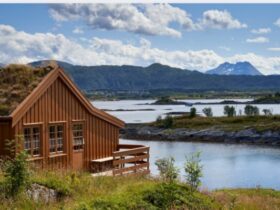Introduction
The Montecito Country Club Easement Dispute has stirred emotions and legal challenges in one of California’s most prestigious communities. Easement disputes can often become tangled in legal terms, impacting property values, community relationships, and development plans. This article delves into the details of the Montecito easement dispute, tracing its history, examining its current issues, and considering the broader implications for residents, property developers, and real estate investors.
Background of the Montecito Country Club
The Montecito Country Club, nestled near Santa Barbara, is a historic club known for its exclusive facilities and scenic beauty. Owned by prominent business figures over the years, the club’s sprawling grounds and scenic views are a source of pride for members and the community. However, disputes over land rights, particularly concerning easements, have recently brought this iconic institution into a legal spotlight.
Understanding Easements: A Brief Overview
To grasp the Montecito dispute, it’s essential first to understand what an easement is and how it can affect property rights and relationships between property owners. Easements, in real estate terms, allow one party to use a portion of another’s property for specific purposes without claiming ownership. Easements come in different types, each with specific legal implications.
What Is an Easement?
An easement is a legally binding right that enables a non-owner to use part of another’s land for a specific function, such as access or utilities. Easements are common in residential areas, where they often allow utility companies to install and maintain lines across private property. However, they can become contentious when the land’s use or ownership changes, as seen in Montecito.
See Also Read: Anti Social Social Club
Types of Easements
Easements can vary based on their purpose and duration. Understanding the types of easements is crucial to grasping the dispute at hand, as each type grants different rights and limitations to the involved parties.
Prescriptive Easements
Prescriptive easements develop over time, often when one party has used another’s property continuously and openly for years. If the use meets legal criteria, a prescriptive easement can grant usage rights, even without the property owner’s permission. This type of easement can be a key point in disputes, especially when long-term use is claimed.
Express Easements
Express easements are formally agreed upon, typically in writing, between the landowner and the party seeking access. They outline clear terms, making them more straightforward to enforce legally. Disputes over express easements generally arise over interpretations of the agreement.
Implied Easements
Implied easements are not explicitly stated but are assumed based on circumstances. For example, if a property owner sells part of their land, an implied easement might allow access through a driveway. These can be a gray area in property law, often becoming contentious when access needs shift.
The Origins of the Montecito Easement Dispute
The Montecito easement dispute began when development plans clashed with existing land rights. Originally, the club’s location allowed for expansive development, but as land boundaries became more defined, disputes over access and use rights arose. Changes in ownership further complicated matters, leading to conflicting claims over who could use specific portions of the land.
Initial Development and Land Rights
The Montecito Country Club’s development included broad land rights, with limited restrictions. Over time, nearby residents became concerned about the club’s use of surrounding land, particularly regarding access paths and maintenance activities.
Changes in Property Ownership
As ownership of the Montecito Country Club changed, so did the interpretations of easement rights. New owners brought new perspectives on land use, at times clashing with the expectations and rights of neighboring residents. These evolving views on easements heightened tensions, ultimately leading to formal disputes.
Key Issues in the Dispute
The Montecito Country Club dispute involves several core issues that affect both the club and the residents. These issues have escalated the dispute from private negotiations to public legal battles.
Property Boundaries and Access Rights
The main point of contention is the boundary lines and access rights that residents claim the club has overstepped. These disagreements raise questions about the rights granted by easements and the limitations of those rights.
Environmental Concerns
Residents worry about the environmental impact of the club’s activities on the surrounding landscape, which is home to native flora and fauna. The Montecito Country Club’s expansion efforts have led to claims that easements are being exploited for construction purposes rather than limited access.
Impact on Residents and Stakeholders
Beyond the legal aspects, the dispute has created tension within the Montecito community. Stakeholders feel that the easement rights may be encroaching on their privacy and affecting their quality of life, making it a community-wide issue.
Legal Actions Taken by Both Parties
Both the Montecito Country Club and local residents have taken legal measures to assert their claims. These actions include lawsuits, mediation, and negotiations.
Claims from the Montecito Country Club
The Montecito Country Club asserts that it holds valid easement rights to certain areas, allowing them to use these spaces for necessary club activities. They argue that these rights are essential to the club’s operation and maintenance.
Counterclaims by Local Residents
On the other side, residents argue that the club’s use of easements is excessive and breaches the intended limits. They claim that the club’s activities, particularly expansion efforts, extend beyond what the original easements permit.
Resolution Attempts and Mediation Efforts
Both sides have made efforts toward resolution through mediation, though they have yet to reach an agreement. Mediation provides a platform for compromise, but thus far, differences in property use interpretations have prevented a full settlement.
How Easement Disputes Affect Property Value
Disputes like the one in Montecito can significantly affect property values. When land rights are uncertain, it introduces risk, potentially decreasing the value of both the disputed property and neighboring parcels. Buyers may hesitate to purchase properties entangled in easement disputes due to the legal uncertainties.
Lessons from the Montecito Country Club Dispute
The Montecito dispute offers valuable lessons for property owners and real estate investors. Knowing the details of easements and ensuring they’re clearly defined can prevent costly legal battles and protect property rights.
Final Thoughts
The Montecito Country Club easement dispute underscores the importance of understanding and respecting land rights. This case serves as a reminder that property rights are complex, and disputes can affect entire communities. Easements are more than mere technicalities—they represent agreements that impact property value, community harmony, and the quality of life of all parties involved.













Leave a Reply